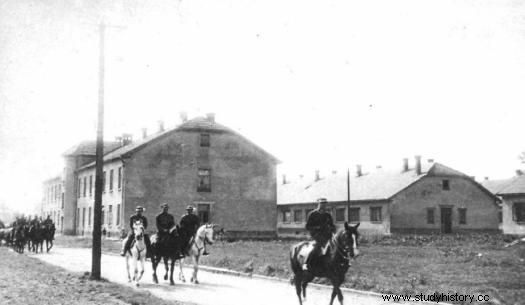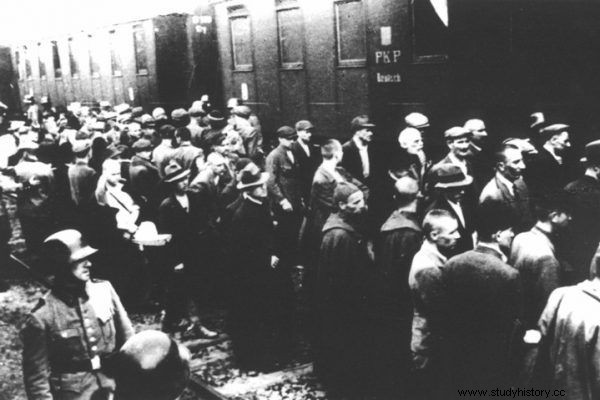In articles and books about the Auschwitz-Birkenau camp, one can read that the Germans established it in mid-1940. This is true, but only half of it. It is rarely mentioned that the camp was in fact built almost a quarter of a century earlier!
The last years of the nineteenth century and the first twentieth century were a period of mass emigration of the inhabitants of Galicia. The poor from the villages of Lesser Poland and Subcarpathia were looking for a better life in America and Western Europe, but many could not afford such a long journey. They went to work "on saxes" - that is, to neighboring Prussia. On the way, they ended up in the last Galician town before the border:Oświęcim.
Of course, there was no job for everyone in Prussia. As a result, thousands of unemployed people stayed in Oświęcim, waiting for any, even occasional work. The problem grew, especially since the outbreak of World War I made it completely impossible for many exiles to return home.

Polish barracks in Oświęcim in the interwar period. Here the Germans set up a concentration camp…
To remedy the total flooding of the town by unemployed people, the authorities set aside a special area about three kilometers from downtown . In 1916, the area was sold to the Austro-Hungarian government, which in the following year created a colony for migrants and seasonal workers.
She described it in the book "Auschwitz. The camp and the city "Austrian historian Sybille Steinbacher: The camp for seasonal workers consisted of 22 brick buildings with hipped roofs and 90 wooden barracks, intended for 12,000 people job seekers (p. 19) .

Loading of prisoners into wagons at the railway station in Tarnów on June 14, 1940. It was the first mass transport to the Konzentrationslager Auschwitz (source:public domain).
The camp was launched, but only functioned for less than two years . Meanwhile, World War I ended and Austria-Hungary disappeared from the map of Europe. The authorities of the reborn Poland were not interested in continuing to maintain the gigantic camp, but its territory automatically became their property . Since then, he has held various functions.
Several thousand refugees from Zaolzie - a disputed territory on the Polish-Czech border, were accommodated there. As Sybille Steinbacher writes, the asylum seekers created a small settlement with a school, a chapel, a theater, a sports club and a shooting association (p. 20) . Another part of the camp was given to the State Tobacco Monopoly. However, the largest part of the buildings was taken over by the Polish Army, transforming the camp for the unemployed into a military camp.

The only relic of the former barracks function was the employment agency. Until the 1930s, it operated in the camp.
The barracks complex survived until the outbreak of the war, and in 1940 it was noticed by Erich von dem Bach-Zalewski, who headed the SS district of South East. He proposed to locate the planned concentration camp there.
Although the SS leadership was not satisfied with the condition of the decaying barracks and the fact that the camp was located on a floodplain, a special commission decided that the advantages of the location outweighed the disadvantages: the site had good infrastructure, was armed, was located at a railway junction and was easy to isolate from the outside world (p. 30).
The decision was made in April 1940. 1,200 newcomers from Zaolzie who were still living in the camp were immediately displaced and the Germans started to create the infamous Konzentrationslager Auschwitz.
Source:
Trivia is the essence of our website. Short materials devoted to interesting anecdotes, surprising details from the past, strange news from the old press. Reading that will take you no more than 3 minutes, based on single sources. This particular material is based on:
- Sybille Steinbacher, Auschwitz. Camp and town , Polish Scientific Publishers PWN, 2012.
